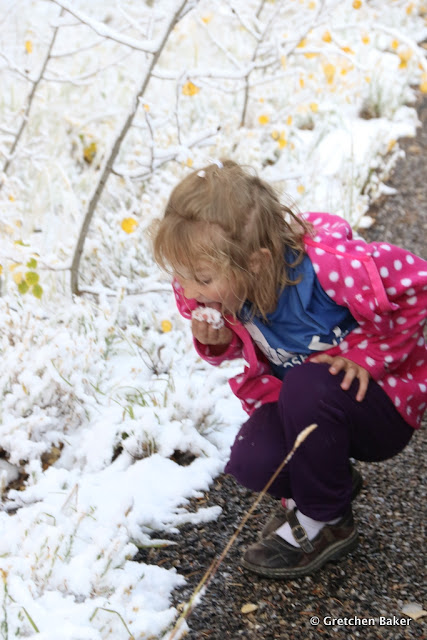I left my part of the Great Basin and went to the very edge of the Basin and Range province to Lava Beds National Monument for over a week in mid-September to teach a cave rescue class for the National Cave Rescue Commission (NCRC). Every year the NCRC hosts a national seminar with a variety of classes. This year it was in Mentone, Alabama, but due to other obligations, I wasn't able to go. I was approached about teaching a Level 1 seminar at Lava Beds, and it all worked out, so I set out.
Even though I spent eight days there, I managed to get very few photos (at least by my usual standards). I didn't even get one of the entrance sign. The first day I arrived I was very intent in trying to figure out what caves we'd be using for the rest of the week. Above is Ron in the culvert for one of the caves, one we ended up using for the mock rescue at the end of the week. It was a difficult entrance to negotiate.
On Saturday we started with classes in Lava Bed's fire conference room.
But this is a cave rescue class, so why not do the Cave Environment underground in Mushpot Cave? The park uses the cave for school group presentations. We stuck around long enough for the Hypothermia lecture, which the 50 degree temperature made us feel a little bit more.
A big part of Level 1 is patient packaging. We need to know how to keep a patient warm in a litter and tied in securely, no matter which way the litter is being moved.
By Day 3, we were ready to head out to some short cliffs and practice moving the litters up and down. We had a station for using the Ferno, our Cadillac of cave litters, and another station for the Sked, which looks like an orange burrito but can fit in tiny spots.
We used a pike-and-pivot technique to solve the edge problem. After the exercises, some of the class went to the bottom of Skull Cave, which is one of 18 caves in Lava Beds that still has ice in them. Twelve others used to in recent history, but that ice has since melted. There are a whopping 700+ caves at Lava Beds!
Our evenings were largely consumed with doing check-offs, which is when the students show the instructors that they know the skills we've been practicing in class. Below is the comm station, where students hook up old military phones to comm wire and talk to each other.
Day 4 we went into Sentinel Cave to practice a variety of techniques, such as searching for patients, running comm line and operating field phones, anchoring, and doing some hauls and lowers in the lava tubes. Below, Tom knew how to make an entrance on an upper level, with the class below him.

It wasn't a very big drop, but big enough to practice setting up a mainline and belay and finding anchors that wouldn't move.

In another station, students found their own anchors, then attached a rope and rappelled down it. Over ten different anchors were used, which was pretty creative.

We all celebrated when Checkoffs were completed! Bill provided entertainment.

After a written test it was time for the mock walkthrough. We used Catacombs, a particularly mazy cave along the cave loop. Lava Beds has over 20 caves open to the public, many with staircases or ladders that descend down into the lava tubes. Then you can walk--or crawl--wherever you like. It's a cool experience.

The mock walkthrough is an exercise in how to run a cave rescue incident. Eddy's a pro at it, and we did five iterations so students could rotate through various positions and try out different roles in a rescue.
There were some humorous moments, like when the medic decided he better clear the airway of the drunken patient who was pretending to throw up. The medic was prepared with his glove. Oh, what we do for fun in cave rescue!
After several hours of practice, we packed everything up and headed back to the vehicles.
It was time to get ready for the mock rescue the next day, which would start at 8 am and go all day. The scenario was that a park employee took two others caving in a cave we hadn't visited all week. When they got to the bottom gate, it wouldn't open. One person got injured with a broken lower leg. The other two went back through to get help. One got hit in the head with a rock and was unconscious up on top of a drop. The other was wandering around, lost and hypothermic. In came the rescuers, who had to employ all sorts of strategies to get all three out.

We were in the cave so long that we had to use pee bottles, as it is not at all kosher to pee in a cave. There's no rain to wash the pee away, little wind to scatter the smell. Gatorade bottles are commonly used, but one must be very careful not to confuse a lemon lime with a pee bottle (it's been done more than once before!). This cave rescuer carefully marked the caps with skulls and crossbones and put duct tape around one bottle that said "Hydrate or die!"
Twenty-one students finished the intensive 7-day course, with up to 14 hours a day of instruction. Thanks to Lava Beds for hosting, all the instructors who volunteered their time, the staff who kept paperwork in order and cooked meals for us, and all the students!
If this sounds like something you'd be interested in, check out the
NCRC website for upcoming classes. Next year's nationals will be near Bend, OR from June 17-24.

































































